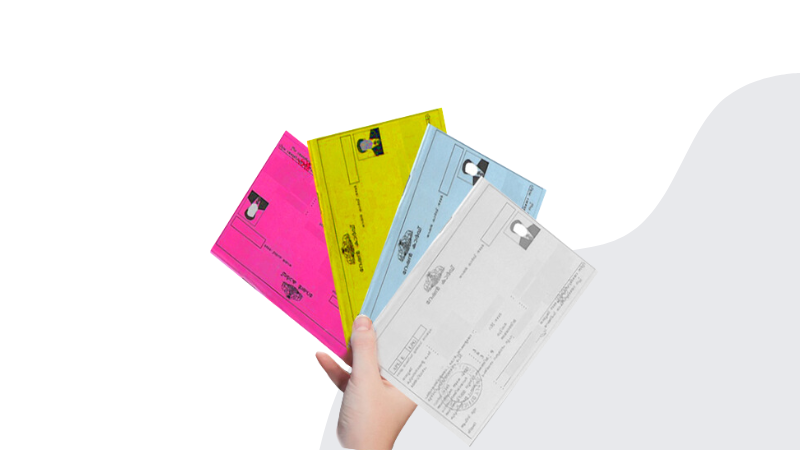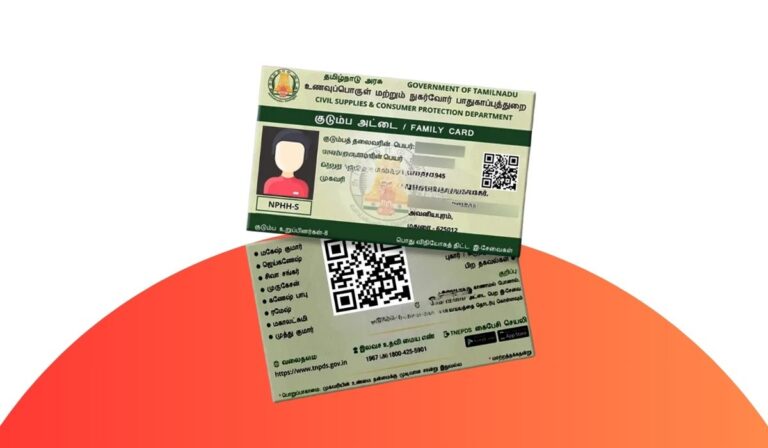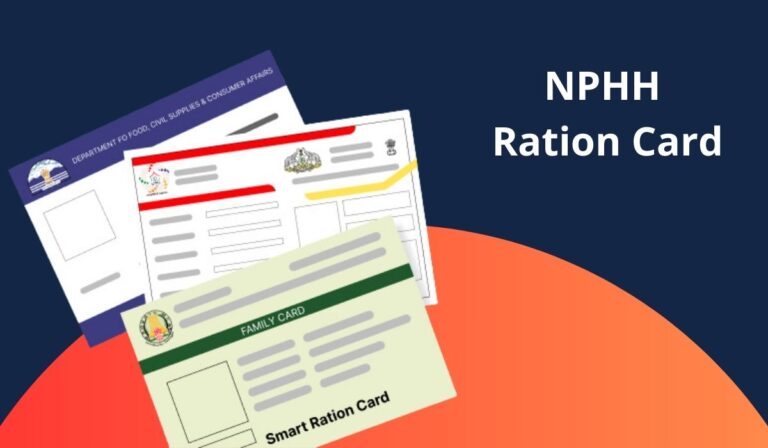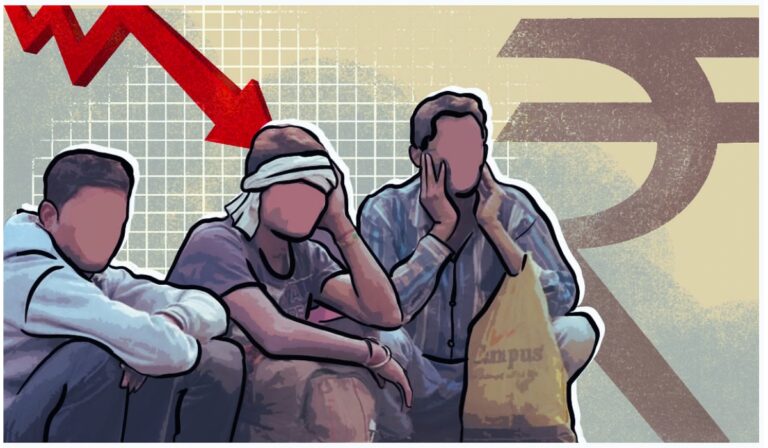Ration Cards are an initiative by the Government of India that entitles families below the poverty line to receive food grains at subsidised prices. The families are offered the foodgrains via PDS (Public Distribution System). The government has announced different types of ration cards catering to different financial statuses.
Different Types of Ration Cards in India
1. Priority Household (PHH) Ration Card
The PHH Ration Cards are typically issued to families who have income levels and vulnerability. With this card, the households will receive 5 kg of food grains for every person in a month at a subsidised price. The price charged from them is Rs 3 for 1 kg of rice, Rs 2 for 1 kg of wheat and Rs 1 kilo of coarse grain. These criteria often consider factors such as income levels and socioeconomic status.
2. Antyodaya Anna Yojana (AAY) Ration Card
The Antyodaya Anna Yojana (AAY) Ration Card is specifically aimed at the poorest of the poor in India. The families who are issued AAY Ration Cards are entitled to receive 35 kg of food grains per month. The rice and wheat are issued in the quantity of 20 kg and 15 kg respectively. Whereas, the rates defined for the foodgrain are Rs.3 and Rs.2 respectively.
3. APL (Above Poverty Line) Ration Card
The Above Poverty Line (APL) Ration cards are issued to households with income below the poverty line. The criteria for APL cards consider factors like income, assets, and social indicators. APL cards were part of the targeted public distribution system in India.
4. BPL (Below Poverty Line) Ration Card
The Below Poverty Line (BPL) Ration Card is granted based on specific criteria that identify households facing economic hardship. The cards enable households to access subsidised essential commodities at lower prices. These initiatives underscore the government’s commitment to uplifting the economically marginalised sections of society.
5. AY (Annapurna Yojna) Ration Card
The Annapurna Yojana Ration Card is specially designed for people who are age more than 65 years old and with no regular income source. This card aims to focus on elderly citizens who are not covered by the National Food Security Act. The primary purpose is to provide food security without pension benefits or significant means of support.
6. Non-Priority Household (NPHH) ration card
The Non-Priority Household (NPHH) ration card plays a crucial role in providing fair access to essential goods for a wide range of households. Unlike its priority counterpart, this card is more inclusive, recognizing that financial stability can be deceiving. It empowers families on the edge of economic stability by offering flexible access to subsidized items without stringent criteria. Serving as a safety net during financial downturns, the NPHH ration card ensures reliable access to essential goods, contributing to the overall goal of fostering inclusivity and resilience within communities.
Also, read:
- What is a Ration Card in India?
Eligibility Criteria and Benefits of Different Types of Ration Cards
The following table provides an overview of the eligibility criteria and benefits of different types of ration cards in India
| Ration Card Type | Eligibility Criteria | Benefits |
| Antyodaya Anna Yojana (AAY) ration card | Poorest of the poor households | 35 kg of food grains per month per family at subsidized rates |
| Priority Household (PHH) ration card | Households that do not meet the eligibility criteria for AAY ration card | 5 kg of food grains per person per month at subsidized rates |
| Non-Priority Household (NPHH) ration card | Households that do not meet the eligibility criteria for AAY or PHH ration cards | No food grains are provided under this card. It only acts as an identity proof. |
| Below Poverty Line (BPL) ration card | Households that fall below the poverty line as specified by the state government | 10 kg to 20 kg of food grains per family per month at 50% of the economic cost |
| Above Poverty Line (APL) ration card | Households that fall above the poverty line as specified by the state government | 10 kg to 20 kg of food grains per family per month at 100% of the economic cost |
| Annapoorna Yojana (AY) ration card | Poor elderly people above the age of 65 years | 10 kg of food grains per month at subsidized rates |
Ration Cards Under NFSA, 2013
The Indian government has implemented the National Food Security Act (NFSA) of 2013 to ensure food security for a larger population. The act aims to provide access to adequate quantities of quality food at affordable prices. It covers 75% of the rural population and 50% of the urban population. Under the NFSA, 35 kg of food grains are offered every month, with an additional 5 kg of food grains per family member. The NFSA has successfully covered two-thirds of the Indian population by offering them food grains at a subsidized rate.
Ration Cards Under TPDS
The Targeted Public Distribution System (TPDS) was a government initiative in India that aimed to distribute essential commodities through ration cards. However, to make the process more simple and comprehensive, the government replaced TPDS with the National Food Security Act (NFSA) in 2013. This initiative ensures food security for a broader population and introduces a more targeted identification of beneficiaries.
Differences between BPL, APL, and PHH ration cards
To facilitate easy distribution of food grains, the authorities issue BPL, APL, and PHH cards to the citizens. This card works as an identification and allows them to procure food grains at lower or subsidized rates. Here is the major difference between all the three cards.
| Factors | Below Poverty Line (BPL) Ration Card | Above Poverty Line (APL) Ration Card | Priority Households (PHH) Ration Card |
| Eligibility | Families living below the poverty line. | Families above the poverty line but still economically vulnerable. | Specific priority households with special needs, such as pregnant women and children. |
| Subsidies | Highly subsidized essential commodities as compared to other cards. | The APL ration card allows one to receive subsidies at a lower rate than BPL cards.
|
Those having PHH cards are offered targeted assistance with a focus on nutritional requirements and well-being. |
| Identification Colour | Typically, in a distinct colour for easy recognition. | May have a different colour to distinguish from BPL cards. | May vary, but often identified separately from BPL and APL cards. |
| Number of Beneficiaries | Targets the most economically vulnerable households. | Expands to include those above the poverty line but still in need. | Focuses on specific priority households with identified needs. |
| Government Initiative | Part of the broader effort to address extreme poverty. | Aimed at assisting economically vulnerable households. | Focuses on targeted support for specific vulnerable groups. |
Differences between AY and AAY ration cards
AAY Card and AY Card are both introduced with the idea of offering foodgrains at a subsidised rate. The cards are offered by the state government and central government by considering the annual income and financial condition. The following are the major differences between AAY and AY Ration Cards.
| Criteria | Antyodaya Anna Yojana (AAY) Ration Card | Above Poverty Line (AY) Ration Card |
| Eligibility | The AAY ration card is reserved for families that are considered the poorest of the poor. | The AY ration card was issued to families above the poverty line but still economically vulnerable. |
| Subsidies | The families are offered subsidised essential commodities, thus offering greater support. | The subsidies are provided, but are generally lower compared to AAY cards. |
| Identification Colour | The AAY ration cards are available colours, pink or red for easy recognition. | The colour of the ration card varies depending on the different colours. |
| Priority in Allocation | The AAY card is a higher priority in the allocation of subsidized food and other essential items. | The AY Card receives subsidies, but may not have the same level of priority as AAY cards. |
Colour Ration Cards:
The tricolour ration cards were introduced in 1999 with the view to end discrimination in the food supply. The following are the popular colour ration cards that are prevalent in India.
1. Yellow Ration Cards
Yellow Ration Cards are specifically designed to aid low-income households having an annual income of upto Rs 15,000. These cards entitle holders to subsidized essentials, including food and other commodities. The card aims to eliminate poverty by offering direct support to those who need foodgrains.
2. Saffron Ration Cards
Saffron Ration Cards in India are issued to middle-income families having an annual income within the range of Rs 15,000 to Rs 1,00,000. The family should not have irrigated land or land of more than a hectare. These cards aim to encourage financial independence while providing necessary aid.
3. White Ration Cards
White Ration Cards are typically reserved for more affluent sections of society. Those families whose annual income is more than Rs 1 lakhs will be eligible for white ration cards.
- Learn more about White Ration Card.
FAQs
1. What is the full form of APL and PHH in the context of ration cards in India?
Ans: The full form of APL is Above Poverty Line and PHH is Priority Household in India.
2. What are the key differences between BPL, APL, and PHH ration cards?
Ans: The key difference between BPL, APL, and PHH ration cards is that they cater to different financial households.
3. Who is eligible to apply for a BPL or APL ration card, and how can they do so?
Ans: Those who qualify for the financial status defined under the BPL or APL ration card can apply for them.
4. What benefits are attached to each type of ration card, including the yellow ration card?
Ans: Yellow Ration Cards are specifically designed to aid low-income households having an annual income of up to Rs 15,000.
5. What is a yellow ration card, and who can apply for it?
Ans: Yellow Ration Cards are specifically designed to aid low-income households having an annual income of up to Rs 15,000. These cards entitle holders to subsidized essentials, including food and other commodities.
Also, read:
- How to Download E-Ration Card Online?
- Ration Card Status: Check Ration Card Application Status Online
- How to Link Aadhaar with Ration Card
This post is also available in: हिन्दी (Hindi)




